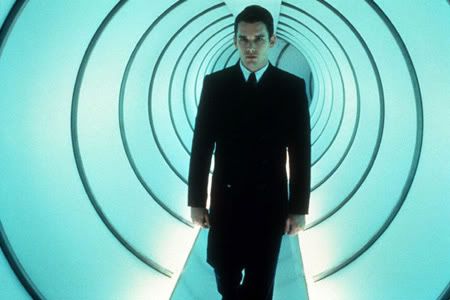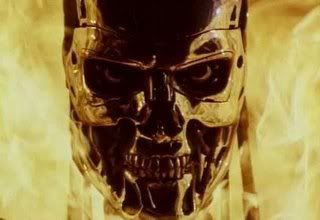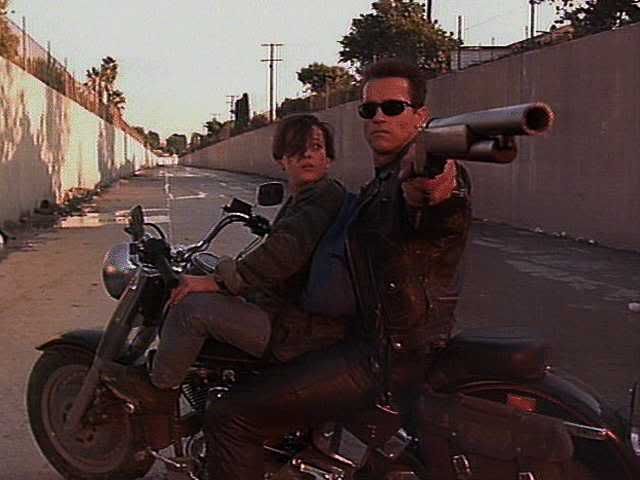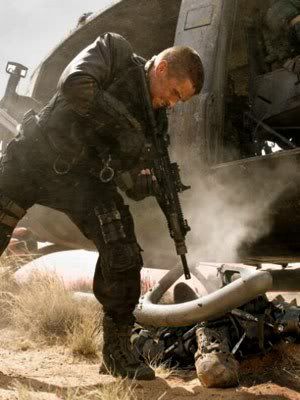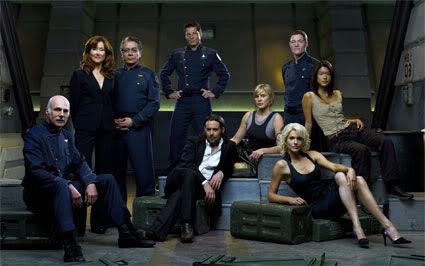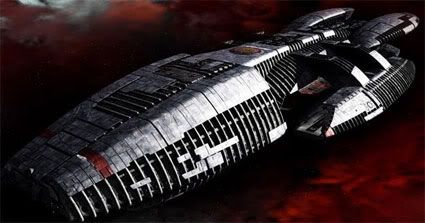
[audio:http://www.blueinkalchemy.com/uploads/flash_gordon.mp3]
FLASH! AH-AHHHHH! Savior of the universe!
If there’s a song that better encapsulates both the plot and mood of a film, I’ve yet to hear it. Flash Gordon is based upon two things: a science fiction comic strip, and the 1930’s adventure film serial starring Buster Crabbe. Long before the likes of Star Trek: Deep Space 9 and RDM’s Battlestar Galactica came along as pioneers in the realm of ‘darker and edgier’ science fiction stories, a trend that Flash would himself follow, the use of older material like this was more about a homage than a revision. However, Flash Gordon comes to us with one intention in mind, one that lies at the root of the reason why we see movies in the first place: to have some fun.
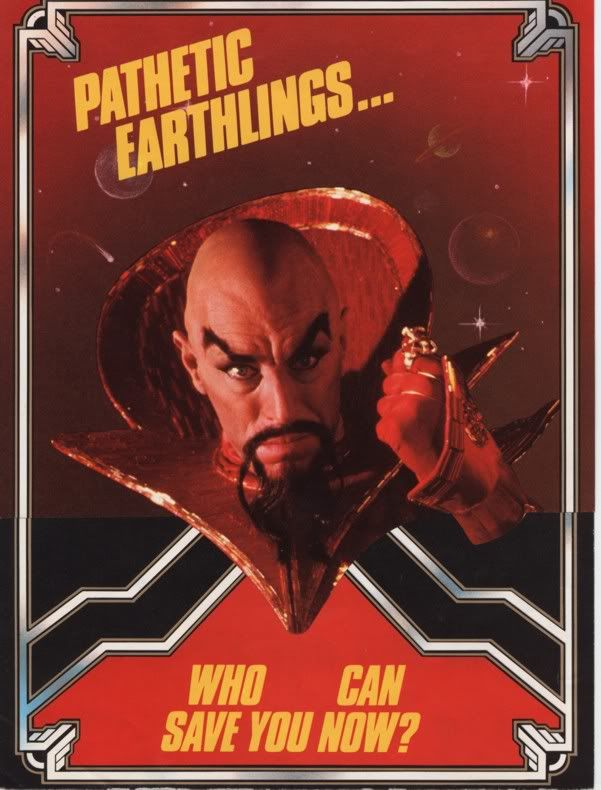
Evil: It’s A Growth Industry!
Flash Gordon‘s story begins with a simple question: “What do despotic galactic overlords do when they get bored?” If you’re Ming the Merciless (Max van Sydow), you toy with the eco-system of a planet that can’t fight back. In this case, Ming picks on Earth. NASA informs the public that the phenomena making Mother Earth scream obscenities are perfectly natural and nothing to worry about, but mad scientist Hans Zarkov (Topol) is the only man sane enough to recognize this abusive weather as an attack from outer space. At gunpoint, he brings two people who happened into his lab along on his journey to halt the attacks: journalist Dale Arden (Melody Anderson) and football superstar Flash Gordon (Sam J Jones). In short order, the Earthlings find themselves among the planets of Mongo, and when Flash realizes who this despot is and what he’s about, he sets his sights on kicking this guy square in his Merciless Mings.
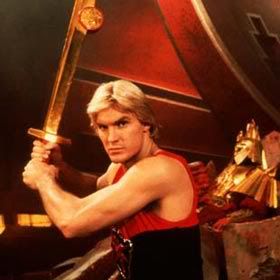
Flash! And the most impractical sword in the universe!
Forget the grayish browns and brownish grays that predominate most modern science fiction story. Flash Gordon is bursting at the seams with bright colors, shimmering costumes and characters that have some memorable features right down to the bit players. In addition to being a treat for the eyeballs, the whole affair has a campiness to it. The only thing terribly serious about the film is how much its tongue is stuck in its cheek. But it’s not taking the piss out of science fiction in a mean-spirited way. It feels like a send-up rather than a parody, a loving callback to the things people love about reading the strips in the newspaper – remember newspapers? – and seeing Buster run around in those short pants of his. I think the most important thing about Flash Gordon, though, is that everybody seems to be having fun. From Max van Sydow’s deliciously malevolent Ming to Timothy Dalton’s swashbuckling sylvan prince, the whole cast seems to be going along with the ridiculous nature of the film’s premise because it’s the most fun they’ve had since they decided to make a living pretending to be other people. I mean, they gave Brian Blessed wings and a large blunt weapon – how can you not have fun in that get-up?
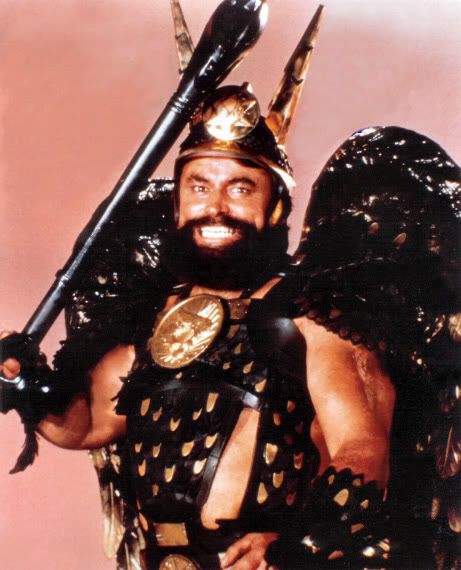
Seriously. Look at that man’s grin.
This is a film that, by today’s standards, would not work as a legitimate science fiction adventure. I think we’ve become a bit too used to the sort of gritty pseudo-realism present in Avatar or District 9. Even the Star Wars films, once known for high adventure among the stars for better and for worse, became darker as they wore on in recent years, along with becoming less coherent. Now, I don’t mind science fiction staying tethered somewhat to the realm of the possible, but the fact that Flash Gordon zooms directly towards the border of the ridiculous and crosses it without nary a backward glance makes it surprisingly refreshing. This story has no deep message, no philosophical bent, not even that much of a plot. But unlike the works of Lucas, this feeling is intentional, and while it’s been said you can’t do camp on purpose, Flash Gordon camps things up so much, it’s hard to imagine the filmmakers not knowing how outlandish the end product would be.

Do I even have to mention Princess Aura? Define “hubba-hubba”.
Entertainment, especially in escapist forms like movies and video games, is about having fun. It’s about losing oneself in the experience provided by the medium. Sometimes you can lose yourself in a deep and touching story, but there are also times when you as an audience member just want to sit back and enjoy the show. Flash Gordon doesn’t punish you for trying to think during the movie the way other badly made films might – rather, it elbows you in the ribs and tells you we’re here to have fun, not to wonder how Flash can survive on a rocket cycle in space with no enclosure or exactly how the physics of Mongo work. Yeah, the plot is thinner than a thread-bare shoestring and the special effects might seem laughably produced in comparison to modern robust CGI suites, but you know what? In this case, none of that matters. Flash Gordon is all about having fun, and that’s why we watch movies. If you’ve forgotten that, gentle reader, put this on your Netflix queue right away. If nothing else, you have an excuse for playing Queen’s music at high volume, and if you don’t think that’s fun, check your pulse. You’re probably dead. And only Flash can save you now.
Josh Loomis can’t always make it to the local megaplex, and thus must turn to alternative forms of cinematic entertainment. There might not be overpriced soda pop & over-buttered popcorn, and it’s unclear if this week’s film came in the mail or was delivered via the dark & mysterious tubes of the Internet. Only one thing is certain… IT CAME FROM NETFLIX.




